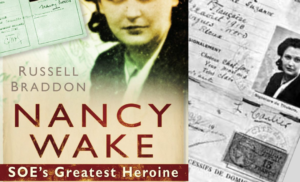
Hamnet * Nel nome del figlio
Despite the vast number of plays and sonnets Shakespeare wrote, we know very little about his private life and his family. Over the centuries, scholars and writers tried to find more information, but the bard remains a mystery. We know, however, that he had three children from his wife Anne Hathaway, two girls - Susanne and Judith - and one boy - Hamnet, Judith's twin brother, who died when he was 11 years old.
In this beautiful novel, Maggie O'Farrell takes us to Stratford-upon-Avon, Shakespeare's birthplace, when we get acquainted with the playwright (who's never called by his name) through his family's eyes, Agnes's especially (in this novel, Anne is called Agnes, as her father called her in his will). O'Farrell postulates (or better, as she herself states, speculates) that the play Hamlet took its name from Shakespeare's deceased son, and that the bard made him thus immortal and used writing to cope with the loss. This is plausible, as Hamnet and Hamlet were at that time interchangeable names... it's unfortunate that we'll never know the truth.
Anyway, Hamlet is a beautiful and absorbing novel, written entirely in the present tense and able to reproduce the characters' emotions (particularly Agnes's) in the reader. The book begins with Hamnet who, while running down the stairs looking for the adults of the house (except his father, who's in London), falls and hurts himself. He's worried about his twin sister who's unwell, and he doesn't know what to do. From this point on, things will only get worse, as Agnes - skilled in herbal medicine - will be able to heal Judith, but Hamnet won't survive the plague. The cause of Hamnet's death in the book is also fictional, as there's no evidence of the boy's real cause of death, and Shakespeare never mentions the plague. There is a very moving passage, when Hamnet tells his sister he will take her place, that they will exchange identities as they once did to fool the adults, only this time they will fool Death.
O'Farrell tells us about Agnes's and William's falling in love when he was her brothers' Latin tutor, and she describes Agnes/Anne (of whom little is known) as a young, headstrong, smart, brave and extremely intuitive youn woman. In order to better understand the life of Agnes (or such a woman in the 16th century), O'Farrell puts herself in her shoes, attending a herbal medicine course, making bread according to a 16th century recipe, and so on.
Writing Hamnet wasn't easy, the author revealed that she's thought about writing it for years, but for some reason she kept procrastinating (meanwhile, she wrote and published three other books). Luckily, now the novel's here and it gives us an idea of one of the possible lives lead by the bard and his family.
***
Ho parlato di questo libro anche nel mio video qui.
Nonostante l'immensa produzione teatrale e poetica di Shakespeare, ben poco si sa della sua vita privata e dei suoi familiari. Nel corso dei secoli, studiosi e scrittori hanno provato a scoprire di più, ma il bardo resta ancora un mistero. Sappiamo però che ebbe tre figli dalla moglie Anne Hathaway: due femmine - Susanna e Judith - e un maschio, Hamnet, gemello di Judith, che morì a soli 11 anni.
In questo magnifico romanzo, Maggie O'Farrell ci porta a Stratford-upon-Avon, la città natale di Shakespeare, dove veniamo a conoscere il drammaturgo (che però non viene mai menzionato per nome) attraverso gli occhi della sua famiglia, in particolar modo della moglie, qui chiamata Agnes come nel testamento che le lasciò il padre. La O'Farrell parte dall'assunzione (o meglio speculazione, come lei stessa ammette) che la tragedia Hamlet prenda il nome dal figlio deceduto di Shakespeare, il quale lo avrebbe reso in tal modo immortale e usato la scrittura per elaborare il lutto. In quegli anni infatti, Hamlet e Hamnet erano nomi intercambiabili e dunque la cosa è plausibile... peccato che non conosceremo mai la verità.
Ad ogni modo, Nel nome del figlio è un romanzo meraviglioso e coinvolgente, scritto interamente al presente e capace di riprodurre nel lettore le emozioni dei personaggi (specialmente di Agnes). Il libro comincia con Hamlet che, precipitandosi giù dalle scale per cercare gli adulti della casa (eccetto suo padre, che è a Londra), cade, ferendosi. È preoccupato per la sorella gemella che non sta bene e non sa cosa fare. Da questo momento, gli eventi precipiteranno, in quanto Judith, grazie alle abilità della madre con le erbe medicinali, guarirà dalla peste, mentre Hamnet ne morirà (anche questa è un'invenzione narrativa, in quanto non si sa di cosa sia morto effettivamente Hamnet e Shakespeare non menzionò mai la peste). A questo proposito, c'è un passaggio molto commovente in cui Hamnet, prima di ammalarsi, dice alla sorellina che prenderà il suo posto, che si scambieranno le identità come facevano una volta per ingannare gli adulti, soltanto che questa volta sarà la morte stessa ad essere ingannata.
La O'Farrell ci racconta anche dell'innamoramento di Agnes e William, che era l'insegnante di latino dei suoi fratelli, e descrive Agnes/Anne (di cui in realtà si sa poco o nulla) come una giovane donna decisa, intelligente, coraggiosa e con un intuito estremamente sviluppato. Per cercare di capire il più possibile quale potesse essere la vita di questa donna (o di una donna simile nel XVI secolo), la O'Farrell si è calata nei suoi panni, iscrivendosi a un corso di erbe medicinali, preparando il pane come una volta, e molto altro.
Questo romanzo non è stato una facile creazione, l'autrice ha rivelato come avesse in mente questo libro da anni, ma per qualche motivo continuasse a procrastinare (nel frattempo, dall'idea alla realizzazione, ha scritto e pubblicato altri tre libri). Fortunatamente, alla fine il libro ha visto la luce e ci ha regalato un'idea di una possibile vita del bardo e della sua famiglia.




